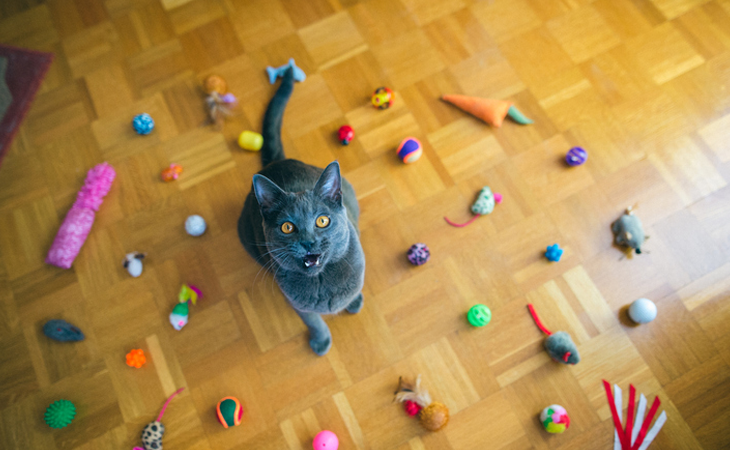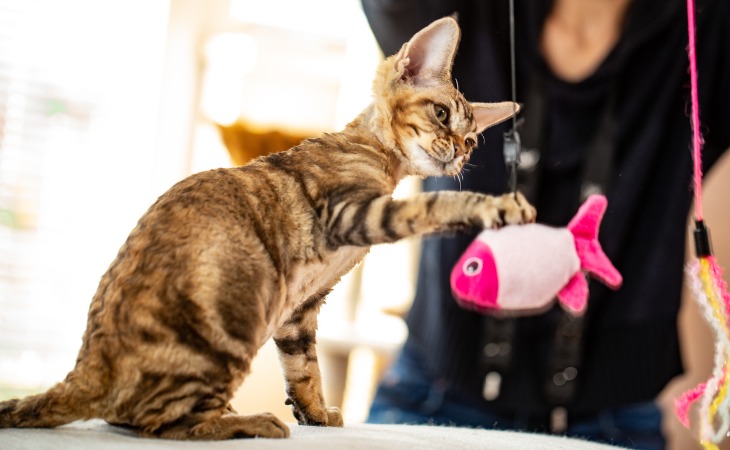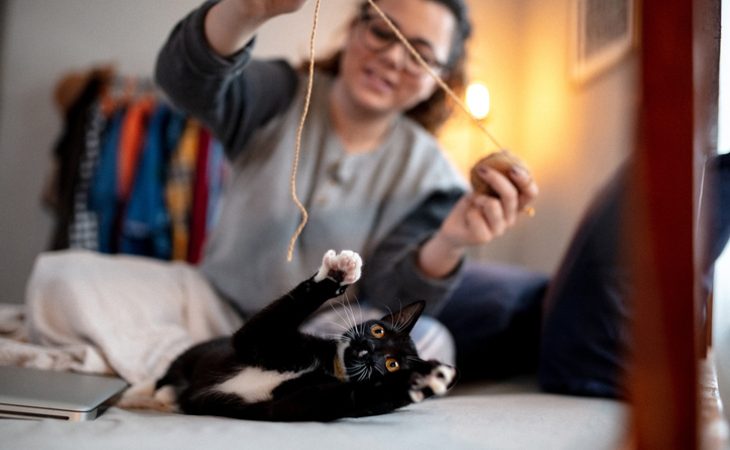Cats express themselves through the way that they behave. You can decipher your cat’s mood by observing their body language. In this article, we will provide you with some tips on how to understand your cat’s behavior. By understanding their body language, you will better understand how and when to play with your cat.
How to decipher your cat’s attitude
In order to understand your cat, you must analyze their every move.
Their eyes and ears
You’ve probably wondered what it means when your cat perks up their ears or stares at you. That’s how they communicate. Your little friend expresses their emotions with the help of their ears and eyes. For example, to tell you that they are feeling good, your cat will raise both ears and blink their eyes. The same goes for when your cats ears are in a neutral position with two round eyes. If your cat is frightened, you’ll notice this by the way they pull their ears back and by the dilation of their pupils.
However, keep this in mind. Cats have very fragile ears. It is recommended not to touch them.
Their tail
Tail movements are very indicative of their mood. A little too much wagging will indicate a state of irritation that needs to be addressed quickly, to avoid biting or scratching. If this happens while you are petting your cat, this is their way of letting you know that they have had enough. The best thing to do is to stop and let your cat come back to you when they feel like it. If your cat is not wagging their tail at all, they are calm and nothing is bothering them at the moment.
Their whiskers
Whiskers are completely relaxed when cats are feeling good. On the contrary, they will be stiff towards the ends if they are annoyed or anxious.
Their movements
Felines have their own unique body language to express how they feel. When your little friend rolls around on the floor, it’s a sign of confidence and well-being. It’s also a sign that your cat is willing to submit to your authority. Another common example is when your cat rubs against your legs. In this case, your cat is simply letting you know that they are happy and expressing their affection to you.

Playing with your cat: information and advice
Playing with a kitten is different from playing with an adult cat.
Playing with a kitten
Your kitten will become energetic around the fourth week. That’s when you’ll see them interacting playfully with other kittens, their mother and any other animals in your home. This experience will teach them how to behave towards other creatures. Around the sixth week, your kitten will begin a new phase of play, this time with all kinds of objects.
Playing with an adult cat
At this stage, playing allows your cat to stay active and maintain a healthy physical and psychological balance. However, unlike with kittens, this is no longer a learning stage. Therefore, don’t force your adult cat to play if they don’t feel like it or if they are eating, for example. Over time, you’ll learn when it’s time to start playing. Several studies have shown that the best time to play with your cat is at the end of the day, preferably before dinner.
The importance of toys for cats
Playing with your cat allows them to stay in shape and soothes them. It also allows you to share a special bond with your cat.
Toys help cats stay healthy
Just like us, cats need a little exercise every day to release endorphins and keep them from getting bored. Toys help your cat avoid weight gain and maintain a good physical condition. Of course, food plays a very important factor in maintaining this balance, but it is not enough.
For cats that are a little more athletic and playful, it’s important to stimulate their natural instincts and share playful moments with them. A helpful tip is to use catnip. Catnip helps your pet’s digestion and prevents them from regurgitating their hairballs. It is available in many forms. You can use catnip sprays on their toys to attract their attention.
Toys soothe cats and helps them to create bonds
Toys give your cat a sense of well-being, which they’ll be able to pass on to you. Playing with your pet also helps your cat to create and maintain a bond with you. Playing is certainly fun, but it also shows your cat’s trust in you. It also shows that your cat wants to share special moments with you.

Different types of toys
There are many different types of toys that you can use to entertain your cat. For example, you can use lasers, balls or DIY toys.
Stimulating toys
If you don’t have any other pets, your cat will need you to play bait. Turning you into a moving target will stimulate their hunting instincts. Of course, all this is done gently, as the cat has already been trained by you. You can use lasers to stimulate them. Most cats love them. This simple, yet extremely stimulating toy has many benefits for your pet. You’ll also have a great time watching your little friend chase that exciting beam of light.
DIY toys
You’ve watched your cat many times. You probably know exactly what amuses your little friend. Why not opt for a DIY (Do It Yourself) toys? You can make DIY toys like a wand toy with a stick and a small object to be used as “bait”. This can be a cork or small plastic toy. If your cat likes to jump on moving objects or even chase them, try attaching a small plastic object or stuffed animal to a toy car. Making DIY toys is a great way to recycle old toys or objects that are gathering dust.
Having fun on their own
It’s important to provide you cat with toys to be able to entertain themselves while you’re away. You can choose small objects that your cat can carry from room to room, such as a small stuffed animal. You can also give them toys such as a small plastic mouse that your cat can paw at and chase. Cats love to use their paws to grab all sorts of objects.

